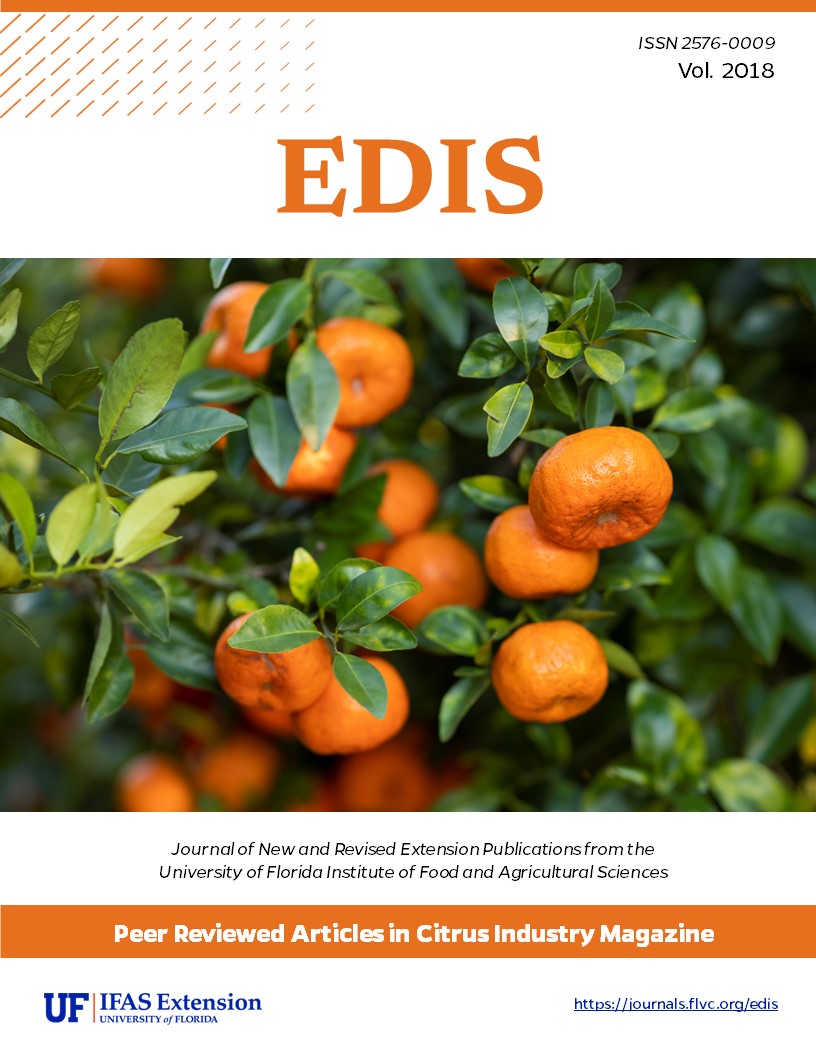Resumen
Florida citrus is host to four main groups of mites categorized by differences in lineage and morphology. However, only rust mites, spider mites, and broad mites historically cause economic damage to commercially grown citrus in the state. The fourth group, referred to as ‘false spider mites,’ are vectors elsewhere of the causal virus of the disease leprosis, but are currently not classified as causing serious economic concern in Florida.
Selection of an appropriate miticide depends on the intended target of control. With the current emphasis on psyllid and citrus leafminer control, it would be wise to choose a miticide that may also have some activity against one of these two pests, such as diflubenzuron (Micromite 80 WGS) or spirotetramat (Movento). With the exception of petroleum oil, no miticide should be applied more than once per season to avoid development of resistance. For more detailed information on the latest miticides and recommended rates see Chapter 10 of the Florida Citrus Pest Management Guide on mite control at: http://edis.ifas.ufl.edu/cg002.
Peer reviewed through UF/IFAS Citrus Research and Education Center; published in Citrus Industry Magazine April 18, 2018.

